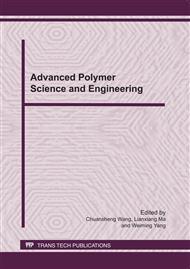p.598
p.604
p.610
p.615
p.622
p.629
p.635
p.640
p.644
Numerical Model of Melt-Through in a Fully Penetrated GTA Weld Pool
Abstract:
A mechanical model of the fully penetrated gas tungsten arc welding (GTAW) weld pool was established to investigate how the melt-through takes place. Analyses show that the forces acting on the liquid metal column which locates in the center of weld pool, whose undersurface and altitude are the bottom surface and thickness of weld pool respectively, determine whether the melt-through occurs. A criterion is set up for judging whether the workpiece will melt through with a specific thickness and selected welding parameters. Factors influencing the melt-through are studied theoretically, and the magnitude and scale of forces that acting on the liquid metal column in a quasi-steady state weld pool are calculated numerically. By using the established criterion, welding currents suitable for a workpiece with specific thickness are predicted.
Info:
Periodical:
Pages:
622-628
Citation:
Online since:
March 2011
Authors:
Keywords:
Price:
Сopyright:
© 2011 Trans Tech Publications Ltd. All Rights Reserved
Share:
Citation:


